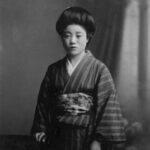A day after Pearl Harbour, a large handful of Japanese Nationals were rounded up and shipped to Prisoner of War Camps in Canada. Later they were joined by Japanese Canadians. Over the course of the war, around 800 issei and nisei were sent to POW camps. In this episode, Raymond and Alexis look at the camps and the men who were put inside them.
> read moreArchives
Episode 6 – Pidgin…Bamboo English…Japlish?
In this quick and casual episode, Raymond and Alexis look at the mixing of the Japanese and English languages – sometimes called pidgin. We had hoped to tell you more about Japanese-Canadian Pidgin but sadly no sources, besides Raymond’s brain, were found. So instead, we cobbled together some historically interesting mixes between English and Japanese along with Raymond’s recollections. Enjoy.
> read moreEpisode 5 – The Murder of Naokichi Watanabe
On the night of March 29, 1931, Naokichi Watanabe was murdered in Japantown. The suspects were Shinkichi Sakurada, Tadao Hitomi and Bunshiro Fujino. The murder weapon was a hatchet. The motive was insurance money. The Japanese Canadian community was in an uproar – fueled by Japanese newspapers’ headlines. What happened next? Dooo dooo dooooooo.
> read moreEpisode 4 – Thomas Shoyama
Thomas Shoyama was the Editor of the New Canadian during the internment period and later went on to become one of the most powerful public servants in the Canadian Government. But throughout his life, it is important to note, that this thoughtful man always took time to water the plants.
> read moreEpisode 3 – Picture Brides
Picture brides were the early twentieth-century’s version of extreme online dating. Japanese men living in Canada would exchange pictures with a Japanese woman back in Japan. Once a match was struck, the woman would marry the man by proxy in Japan and then sail to Canada to meet her husband for the very first time. Talk about intense.
> read moreEpisode 2 – Redress
In this episode, Raymond and Alexis look at the three points and six sections of the Redress Agreement and unpack the meaning behind the stuffy wording.
> read moreEpisode 1 – British Columbia Security Commission
The British Columbia Security Commission was created by the Canadian Federal Government through Orders in Council PC 1665 and 1666 on March 4th,1942. Its main role was to organise and supervise the uprooting and relocation of approximately 23,000 Japanese Nationals and Japanese Canadians. In addition, it was to set up housing and welfare programmes including employment, education for children and medical services for the sick.
> read more






